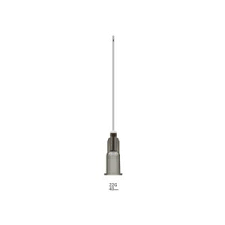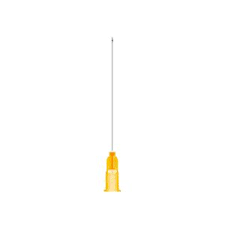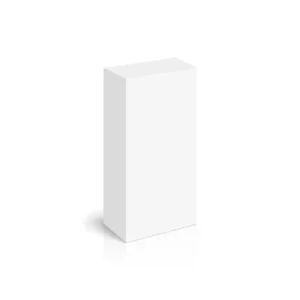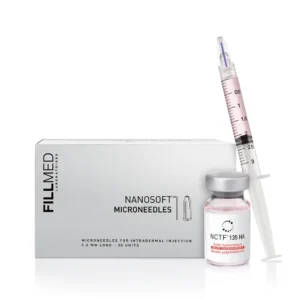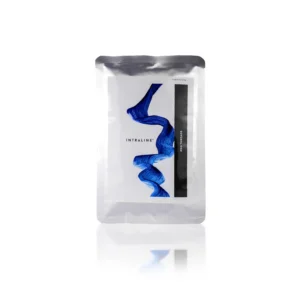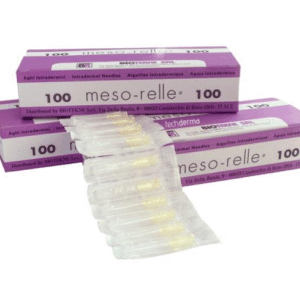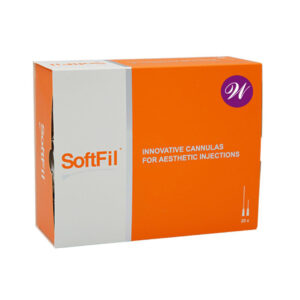Cannulas and Needles
Cannulas and needles are both medical instruments utilized for injections, yet they vary greatly in their structure and usage. Cannulas are blunt-ended tubes, whereas needles are pointed-ended. Cannulas require an additional needle to establish an entry point, while needles can directly penetrate the skin.
Here’s a more comprehensive breakdown:
Needles: Needles have a sharp tip designed to pierce the skin and access blood vessels or tissues.
Needles are generally meant for a one-time injection and then disposed of.
Needles can be employed for a range of injections, including subcutaneous, intramuscular, and intravenous injections.
Cannulas:
Blunt tip: Cannulas feature a rounded, blunt tip that minimizes the chance of tissue injury and bruising during injection.
Requires entry point: Cannulas cannot break the skin independently and require an additional needle to create an initial puncture.
Multiple uses: Cannulas are capable of reaching various injection points from a single entry site.
Utilized for dermal fillers and other injections:
Cannulas are frequently used for administering dermal fillers, reducing the likelihood of bruising and swelling.
Enhanced control: Cannulas can offer improved feedback to the injector during the injection process.
Key differences:
Penetration: Needles penetrate the skin, while cannulas depend on an initial puncture made by a needle.
Bruising and damage risk:
Cannulas are linked to a diminished risk of bruising and tissue harm due to their blunt tip.
Injection method: Needles are employed for direct injection, while cannulas are positioned through a pre-existing entry point.
Adaptability: Needles are more adaptable for various injection types, whereas cannulas are often favored for dermal fillers and other aesthetic procedures.
What is the difference between needles and cannulas?
Practitioners can choose between needles and cannulas for injectable treatments, as these two methods work differently and offer distinct advantages. By understanding the differences between the two, practitioners can determine which option is best for a particular treatment.
The main differences between cannulas and needles for fillers are:
- Different sizes and shapes
- Different injecting capabilities
- Entry points required
- Downtime and recovery process
Different sizes and shapes
When comparing cannulas or needles for filler injectables, it’s important to note that needles have shorter lengths and sharp tips, while cannulas have longer lengths and blunt tips. Needles are static during injection, while cannulas are flexible and feature a thin tube.
Different injecting capabilities
Cannulas and needles have different ways of penetrating the skin for dermal filler injections. Cannulas have a rounded edge and blunt tip, which makes them unable to puncture the skin by themselves. As a result, a needle is usually used to create an entry point for the cannula.
Needles, on the other hand, have a sharp tip and can easily penetrate the skin, delivering the filler into the targeted area without requiring further manipulation from the practitioner.
Entry points required
Compared to cannulas, needles have a shorter length and require more entry points to access the full treatment area. Conversely, cannulas require only one insertion point due to their longer length and flexibility. Since cannulas can re-enter the same entry point multiple times, they eliminate the need for multiple entry points like needles.
This means that patients are less likely to experience discomfort, which is essential for both the practitioner and the patient.
Downtime and recovery process
When it comes to dermal fillers, one of the primary concerns with using needles is their sharp and rigid shape.
However, cannulas offer a distinct advantage over needles. The blunt tip of a cannula allows it to navigate through tissues in a more targeted and precise movement, providing the practitioner with more control over the injection process. This means that they can feel resistance from surrounding structures and adjust their approach accordingly.
On the other hand, needles have a greater risk of accidentally puncturing veins or arteries, which can lead to complications such as swelling and bruising, or in severe cases, intravascular injection. This occurs when the filler is injected directly into a vein or artery, which can result in dangerous conditions, like vascular occlusion or necrosis.
Cannulas, with their rounded tips, are less likely to cause these types of issues and therefore result in fewer side effects and a quicker recovery time. In fact, the blunt tip of a cannula tends to gently push aside veins and arteries as it passes through the tissues.
Showing 1–9 of 14 results
-
Cannulas and Needles
BIOMEDICO 30G – 12mm
-
Cannulas and Needles
BIOMEDICO 30G – 4mm
-
Cannulas and Needles
BIOMEDICO 32G – 4mm
-
Cannulas and Needles
BRAUN 30Gx12mm
-
Cannulas and Needles
FILLMED® NANOSOFT MICRONEEDLES
-
Cannulas and Needles
MESO-RELLE® 32G – 4mm
-
Cannulas and Needles
MESO-RELLE® 32G – 6mm

